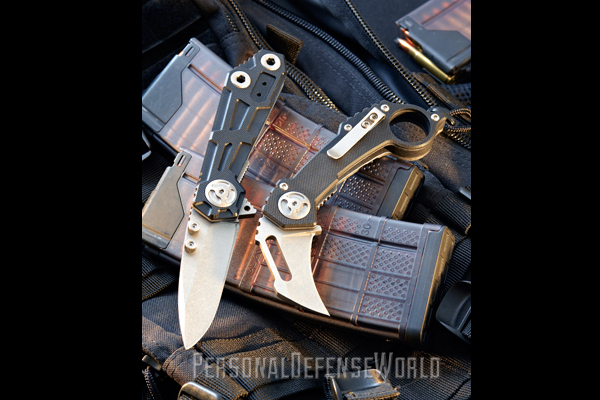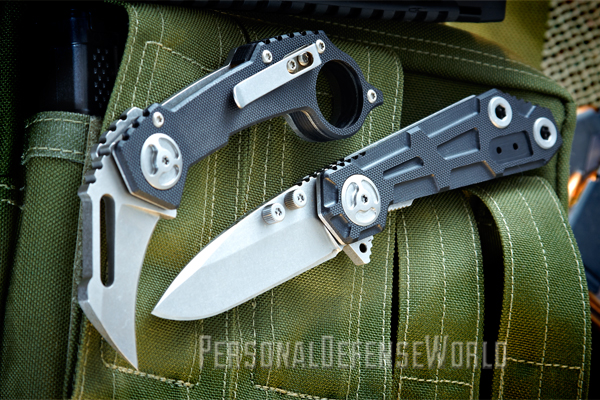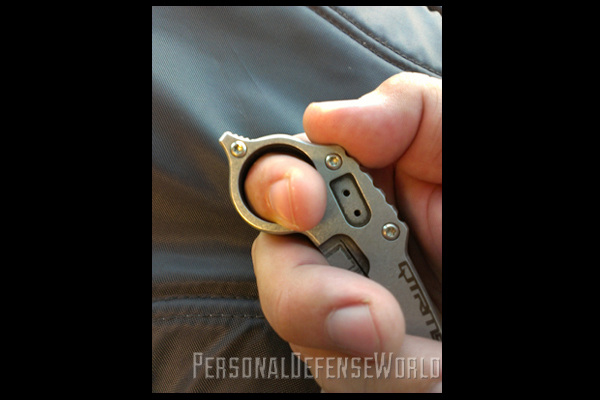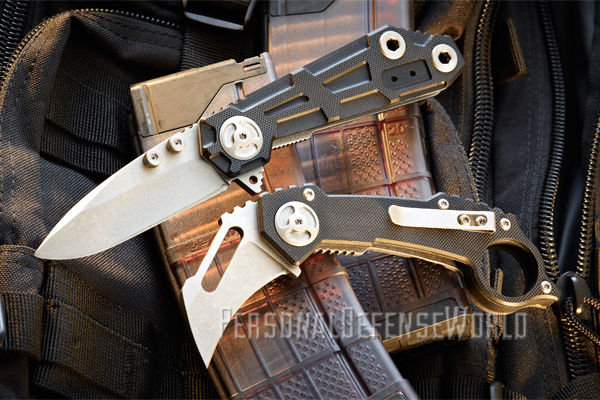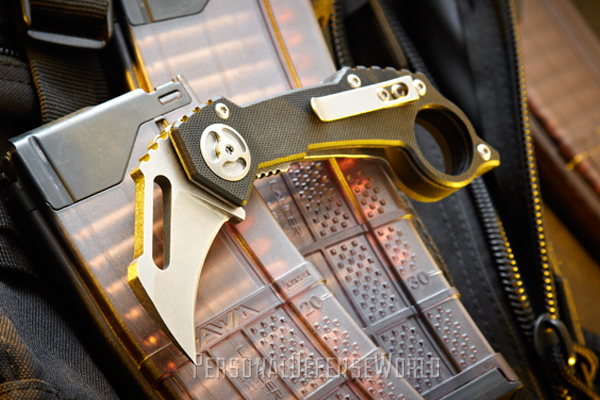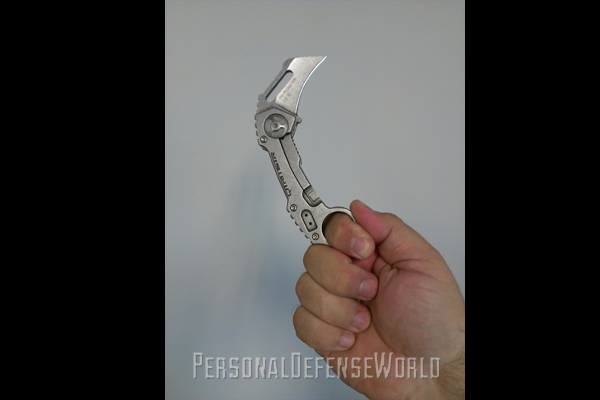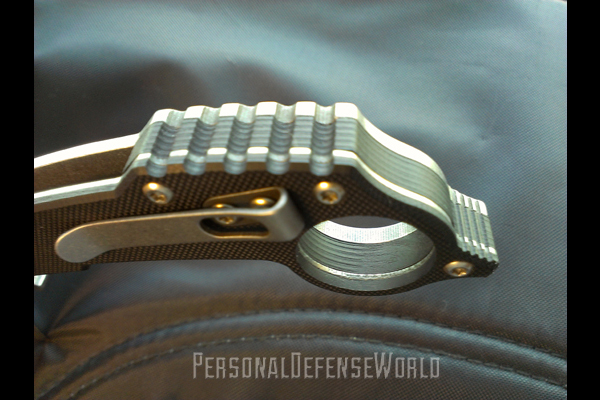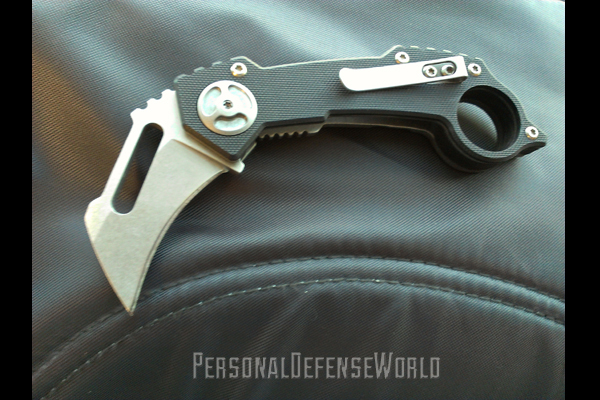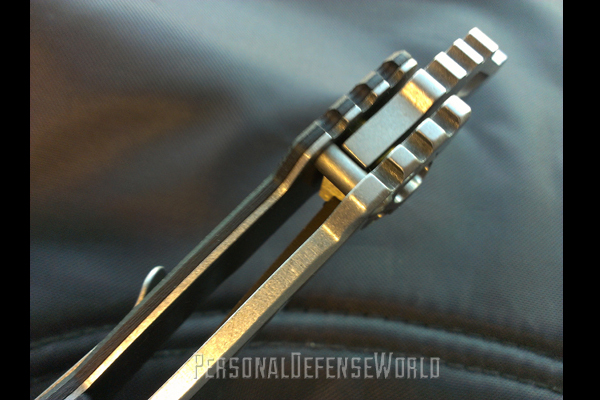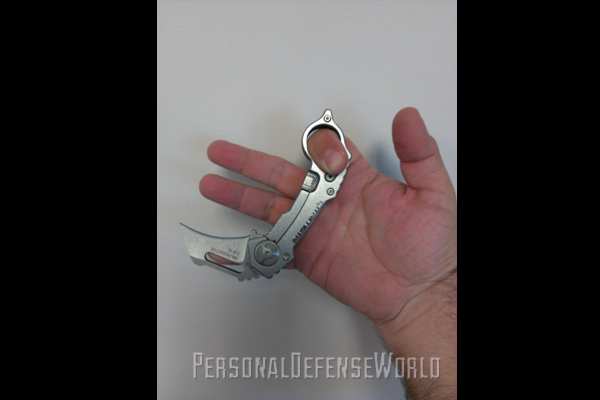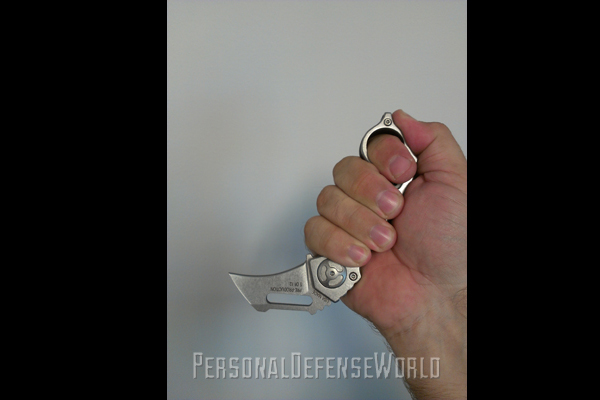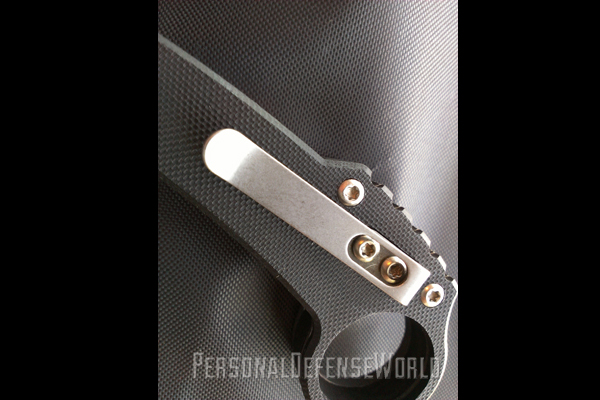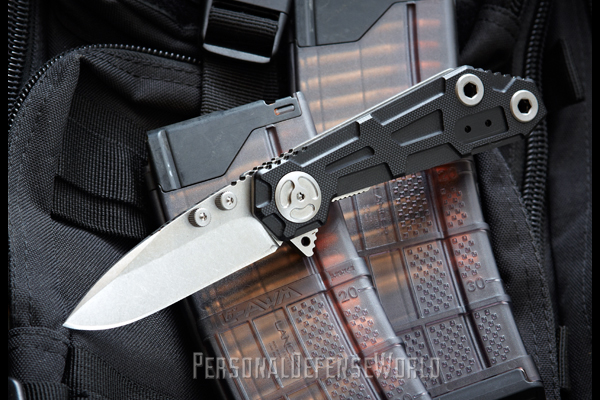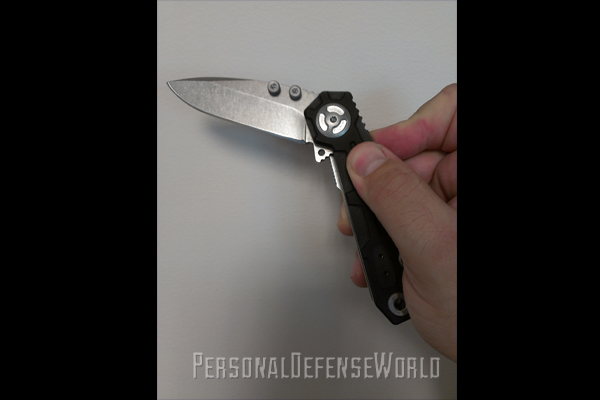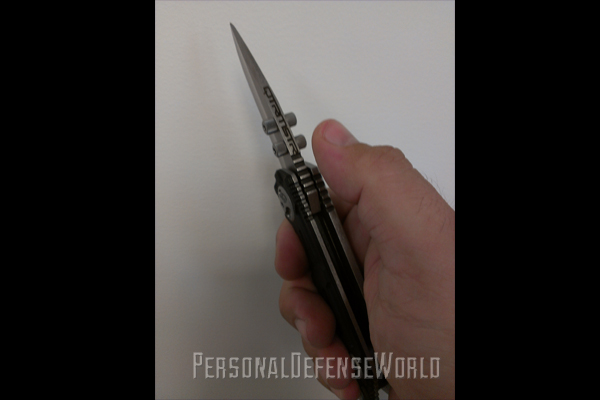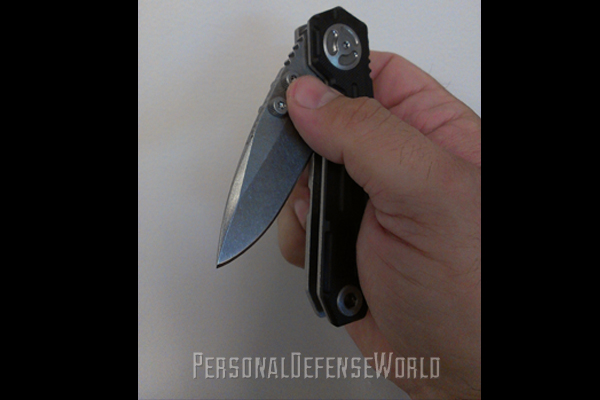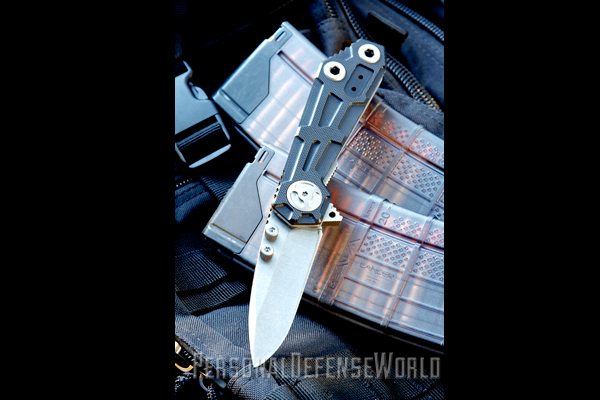How does a new company distinguish itself from its competition? How does it grab the consumer’s attention, promise and deliver that consumer a quality product and then follow through with subsequent designs that continue to engage customers? In the case of one new firm, the answer is a combination of style, a dedication to domestic manufacturing and an almost whimsical sense of marketing. That company is Quartermaster, whose headquarters lie not far from Austin, Texas.
Quartermaster Equipment Manufacturing, often styled as “QTRM5TR” in its marketing literature, was founded in 2012, according to Lee Price, Quartermaster’s team leader. He describes the firm’s founders as “artisan-engineers” from the aerospace and knife industries. “We are dedicated to creating the finest possible American-made knives,” he said. “The main thing that sets our company apart is our dedication to producing a fully 100-percent American-made product. Everything, from the retail packaging to the clips on our sheaths, is produced here, domestically.”
Aesthetically, Quartermaster’s over-built, stylized knives leave no room for subtlety. Users will either love or hate the look of the company’s products, which feature amusing nicknames apparently inspired by the characters of a popular television show from the 1980s, like Magnum, PI. The company has also wasted no time introducing proprietary design components, including their ORB pivot system and tri-spoke pivot assembly. “The ORB is our proprietary thrust-bearing system,” explained Price. “We use it on every folding design that warrants it.”
Advertisement — Continue Reading Below
By contrast, the tri-spoke pivot assembly is what Price calls Quartermaster’s signature. “It’s an enlarged pivot screw that dissipates energy over a large surface area, causing smoother blade rotations. A nice bonus of this unique, oversized design is that it can be turned and tightened with random devices in the field, making all of our knives ideal for combat carry or outdoor adventures.” Two knives representative of that product line are the QTR-5 and QTR-6.
QTR-5 Theodore “T.C.” Calvin
The QTR-5 is a kerambit. Derived from an Indonesian utility blade, the kerambit has become popular with those who train and teach the use of the blade at close quarters. Frustratingly, many of the production kerambits offered today ignore certain aspects of the pattern’s design that must be present for it to be of use as such. Some kerambits cannot be drawn directly into a reverse grip. Others have blades that aren’t properly curved. Still others have no means of opening the blade in the reverse grip.
The QTR-5 suffers from none of these problems. The heavy knife was designed for reverse-grip carry and offers a reversible pocket clip to please both right- and left-hand buyers. Thick grooves, including a nice portion that serves as a thumb ramp (should you choose to hold the knife in a forward grip,) are found on every conceivable contour. A slot in the blade permits opening with the thumb in forward grip and with the little finger in a reverse grip. “Our original intent was that the user could have the clip mounted on the G10 side, wear the knife in their right-hand pocket and remove the kerambit primarily with their index finger, then while removing it from the pocket, allow the spine of the knife to catch on the pants pocket, effectively releasing the knife from its stored location and allowing full grip by the user within fractions of a second,” said Price.
Advertisement — Continue Reading Below
The QTR-5 is 6 inches long overall with a 2-inch hawksbill blade. Our sample was razor-sharp, ground on both sides and featured a distal taper to a needlepoint. The reversible pocket clip features a cutout so the screws securing it may be accessed. Due to its small size, it shifts slightly in place, but it had decent tension out of the box. The blade opens smoothly and locks positively without play. The frame lock engages the blade tang securely and with plenty of room for wear. In test cutting, the kerambit performed well, slicing easily and retaining its edge reasonably well.
Blade steel is BD4P, which Carpenter Technology (a leading industry provider of stainless steels and specialty alloys) describes as a “powder metal processed, air-hardened, high-carbon chromium steel offering enhanced corrosion resistance and toughness compared with 440C stainless.” The company asserts that BD-4P yields “excellent edge retention and grinding/polishing characteristics.” Quartermaster says the blade is hardened to RC 60-61. Perhaps one of the nicest features is the ledge or protrusion on the finger ring. This permits bracing the kerambit in its extended position (which adept users may employ for hooking, slicing attacks) and can also be used for blunt striking.
QTR-6 “Orville” Rick Wright
Quartermaster describes the QTR-6 as “easily the most EDC-able model in our present lineup.” The knife is 7.75 inches overall with a 3-inch drop-point blade. Steel is the same BD4P, hardened to RC 60-61, as on the QTR-5. Also like the QTR-5, the “Orville” features Quartermaster’s tri-spoke pivot assembly and ORB pivot system.
This is very a solid knife. It is quite heavy for its size, weighing in at 6.4 ounces. Its pocket clip is weighted to match. The clip is secured by two screws, had nice tension out of the box and can be reversed for southpaws. The knife is configured for tip-up carry only.
Advertisement — Continue Reading Below
Handle scales are G10, featuring what Quartermaster says is a unique machined pattern. “During the design phase,” said Price, “we start with a flat sheet and begin to chisel away portions of the handle that are not visually appealing or create a ‘hot spot’ in the hand. What we finally arrived at is what you see here today.” These handles, coupled with the deep grooves cut practically everywhere in the knife, give it great traction. Despite its chunky dimensions (the open-frame design, secured by the pivot and two chain-ring bolts, is over half an inch thick), it is reasonably comfortable in the hand. It would also make a very effective fist load.
The feature most knife users will notice immediately is the knife’s quadruple thumb studs, two on each side. Lee Price said this was done initially to give users a means of “visually scaling” the knife. “It’s always difficult to evaluate a knife’s true size in a photograph,” he explained. “We figured that when making a compact, pocket-draw piece, that we would likely place a through-hole in the blade, but if the blade were mid-sized to large, we would place two studs, side by side.” Quartermaster plans to introduce a variety of “plug” designs utilizing the holes in the blade if the user wants to remove the studs and customize the knife.
The extremely sharp, drop-point blade, which is ground on both sides, opens smoothly and locks positively. There is no blade play. Like the QTR-5, the frame lock engages the tang securely but not fully, with plenty of room for wear. The dual thumb studs take a little getting used to, while the forward set of studs limit the depth to which the blade will penetrate. The traditionally styled blade cuts very well, however, and breezed through a variety of utility chores such as cutting strips of cardboard and lengths of rope. A few minutes with a diamond rod and it was razor-sharp again. While opening the knife with the thumb studs takes some adjustment, flipping it open will be familiar to any user who has purchased other knives with this feature. The nice thing about the flipper is that it forms an integral guard, protecting the hand both while cutting and in the event of a lock failure caused by abuse of the knife. Should the blade close, the guard, not the sharp edge, would make contact with the fingers.
Reputation
Whether you love or hate the design philosophy behind Quartermaster’s product line, there’s no denying that these are ruggedly built, distinctive knives. The company’s commitment to 100-percent American materials and assembly is laudable in a market awash in Chinese imports, while its QTR-5 and QTR-6, representative as they are of Quartermaster’s offerings, acquit themselves well during testing. Team Leader Price promises more in the coming months. “There are enough original ideas in the tank at QTRMSTR to keep us producing them for years to come,” he wrote. “We understand knives and tools, we know what it takes to be continually growing within the knife business. If you’re intrigued by what you see, but QTRMSTR hasn’t quite hit your ‘like’ button yet… just wait until we hit our stride.”
Advertisement — Continue Reading Below
BUY NOW! AT /tactical-knives/.
